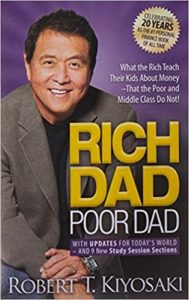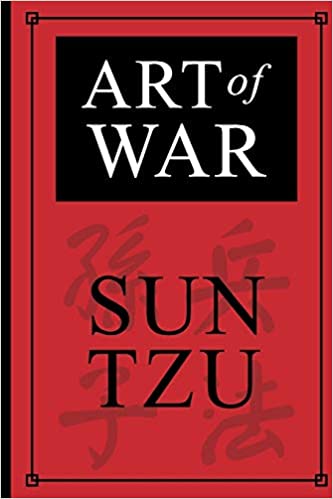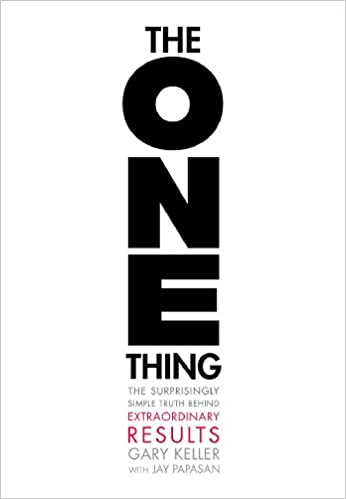
Book: Rich Dad Poor Dad. What the Rich Teach Their Kids About Money That The Poor And Middle Class Do Not!
Author: Robert Kiyosaki
Year Published: 1997
Book Summary
TOPLINE
Robert T. Kiyosaki’s book in the genre of personal finance came out in 1997. The book comprehensively turned on its head, the conventional wisdom about investing, and wealth of the time. That the book is a success, is easily demonstrated by its 40 million copies sold.
Kiyosaki advocates the importance of financial literacy and building one’s financial IQ as a prerequisite for building wealth through investing in assets, real estate, and businesses.
In a folksy storytelling style, Kiyosaki tells the story about how at a young age, he learned to differentiate between his real Dad’s “Poor Dad” understanding of business and wealth, and that of his friend’s Dad, the “Rich Dad.” It was advice from the “Rich Dad” that helped him become astute about investing and become wealthy.
BOOK SUMMARY
It is possible to encapsulate the ideas of the book into perhaps just two simple points:
- The poor work for money. The rich put their money to work for them.
- Rich people invest in assets. While the poor acquire liabilities masquerading as assets.
The Rich Dad Poor Dad book is way more than these two points. However, Kiyosaki’s goal is to teach people these two key distinctions above all else.
Kiyosaki rightly rails about our broken education system, which does not teach children any financial literacy.
You need to be financially literate to be able to grasp the idea of investing. You need to understand the accounting no matter how boring the subject, you need to understand the difference between assets and liabilities. You need to understand what cashflow is to begin to grasp the idea of investing and achieving financial independence.
He succinctly makes the point that “A person can be highly educated, professionally successful, and financially illiterate.”
Kiyosaki makes the point that the difference between the Rich and the Poor is that the rich accumulate assets while the Poor accumulate liabilities. It’s the assets that put money in the pockets of the Rich.
Understanding cashflow helps you understand how you are spending the money that you are earning or investing. Cashflow also enables you to know how much money you are going to keep. According to Kiyosaki, “Cash flow tells the story of how a person handles money.”
Financial aptitude, as distinct from financial literacy, is the knowledge about what to do with the money once you have made it. This aptitude and expertise help you grow your money and ensure that you know how you can prevent other people from taking your money away.
If you drill down to why people play it safe, then you will see that the reason is “Fear.” How do you then overcome fear and other obstacles in the path of becoming Rich yourself?
Kiyosaki’s solutions are – get over the fear of losing money. Overcome bad habits, and cynicism, and above all, overcome laziness.
Kiyosaki recommends a bit of greed as a good thing.
He also recommends an exercise in lateral thinking – When you are buying an asset and lack the resources to buy it, do not say “I can’t afford it,” instead you should ask the question “How can I afford it?”
Central ideas in the book:
-
Have money work for you
Kiyosaki helps the reader understand how money works. This knowledge also helps explain how the ‘Rich’ become richer. Rich people make money work for them. The assets that the Rich invest in continue to produce returns even while the Rich sleep.
The poor, on the other hand, work for hours of their time.
-
Build your Financial IQ
You should invest in building your financial IQ. To acquire financial intelligence, you need to learn about accounting, Investing, and understand markets. This investment in yourself will pay dividends literally and figuratively.
Learn management skills. These skills include the management of cash flow (or accounting), the management of systems, the management of people, and the management of communication.
Put aside 5% of your income each month to invest in building your financial IQ. This amount could be to purchase books or courses or attendance to seminars on personal finance and investments.
-
Build Assets
It does not matter if you keep your daily job. Adopt the mindset of working on learning instead of the traditional approach of working to earn.
Start acquiring real assets and not liabilities. Your portfolio of assets or stocks should all generate income. Choose an asset class that you love, and then invest in that and then grow that investment.
Kiyosaki defines assets like stocks or bonds, real estate that you can rent out, or royalties that you can earn, for example, from music. Or any assets that generate income and grow in value over time.
Liabilities can be cars or your own house that carries a mortgage, or anything else that either depreciates over time or does not create an income stream.
-
Being an Entrepreneur Is Less Risky
Is owning a business riskier than working in a job for someone else? Kiyosaki makes the point that one is not riskier than the other – in fact remaining in a lifelong permanent job could be riskier as you may never gain the financial independence that you seek.
The very first step in building wealth lies in changing the mindset to that of managing risks, instead of avoiding them. The second step is to learn about investments. This knowledge will teach you that it’s better not to play it safe because that always means missing out on significant potential rewards.
Being an entrepreneur does not mean starting with a substantial investment. It could instead be a small amount say $1000 or even $100 invested in stocks or bonds or tax lien certificates.
And to change your mindset about the risk – treat the invested amount as though this money is gone forever. This way, you remove the worry from your mind about losing your investment.
MY RECOMMENDATION
I would recommend this book extremely highly for budding entrepreneurs or anyone seeking financial independence.
I would also recommend this book to salaried folks, to use this book as a kind of prism through which to see how the wheels move in the mind of the entrepreneur. And how investing in income-producing assets can change their lives too.
I do want to add the caveat that Rich Dad, Poor Dad book should be regarded as a perspective builder and not as a model for a business plan.
Finally, use this book for its active learning and motivation. At the same time, take the advice with a grain of salt!




